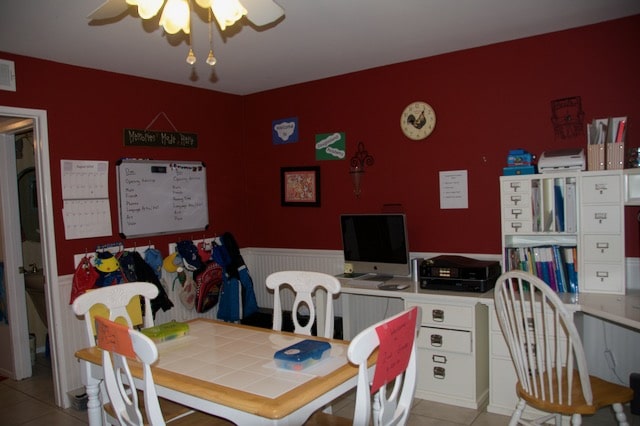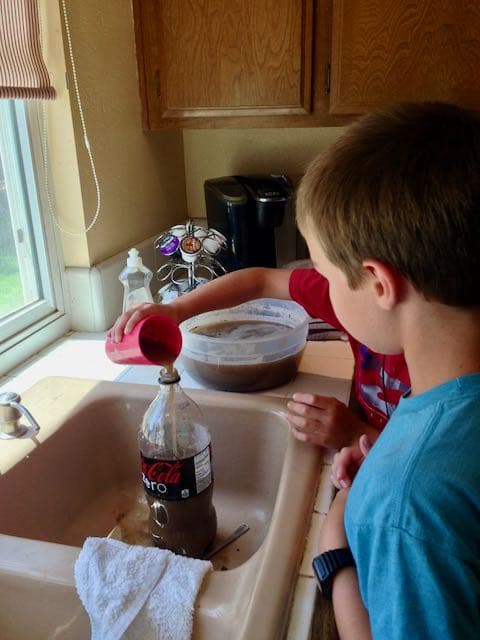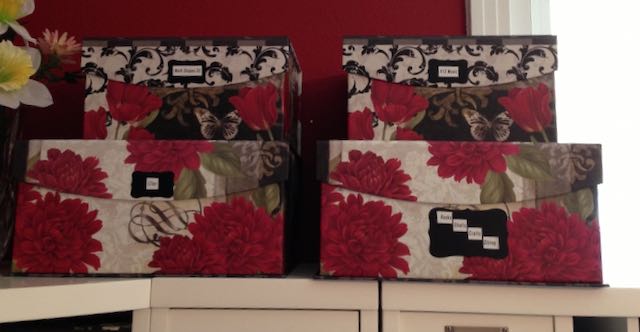
Homeschool Environment: 3 Tips for Success
As we head back to school, many of us are setting up our homeschool rooms. Whether your kids are traditionally homeschooled, or attending a virtual school, this post is for you! I’m going to share 3 tips for your homeschool environment that will help you set the stage for success!
Take a Trip Down Memory Lane
I want you to think back to your school days. In your mind’s eye, go back and walk into your favorite elementary classroom. What did you see, how was it organized, and where would you sit to learn for the day? What did the learning environment communicate to you as you entered the space?
Now, I want you to come back to today, and think about where your children are doing their learning. Do you have a homeschool environment set up that emphasizes the importance of focused learning? Do your children have the resources they need to be successful in their school day?
I know that you may not have anticipated your children would be transitioning to homeschooling, and you didn’t plan or prepare for this reality. Many of you are getting ready for a fall start to learning at home because the schools are still closed!
If you are struggling with how to make it work in your home I can relate! It can be very challenging to figure out how to make your space work when every room already has a purpose. In fact, for years, our homeschool room was the family room, the kitchen dining area, and the music practice room (once we moved in the piano!).

That room was truly a multipurpose space for us. It is possible to make homeschooling work, even in a small home, with some creative thinking.

As you are looking through your home to identify the possible areas where homeschool would take place, I want you to think of a few things to help you be successful.
1. Centralized Location
This is perhaps the most important component of your homeschool environment. It must be located in a central location in your home. Ideally, you should be able to see the homeschooling students from the kitchen. This is true no matter what age your kids are.

I have two high school students, and they have been attending school virtually for their entire careers. They do not do their school in their bedrooms. That would be a recipe for distraction and unproductiveness!
If you send your child to their room for school, chances are they will discover new ways to waste time, such as building an epic Lego ship, reading a novel they found on their bookshelf, or painting their nails. You must be able to easily supervise your children and monitor their progress while they are doing school.
This doesn’t mean that you need to stop everything you are doing for hours at a time so that you can watch them learn. In fact, that would probably drive your older children nuts. Middle and High School students thrive on independence, and they will not respond positively to you standing behind them and watching them type their paper. This is why your homeschool environment needs to be located in a centralized place in your home.
If you have the learning environment set up in view of the kitchen, then you are free to take care of any kitchen and meal planning tasks you have while keeping an eye on school. This will give you the opportunity to keep up with the other home management tasks which come up while you are supervising school.
My students have been doing virtual school @ home for their entire education careers. They are independent learners, and now that they are in high school, they do almost all their work on their own. However, if I am absent from the downstairs environment for too long, they will get distracted and either find something interesting to look at on their iPad, or get into a very non school related conversation.
Or, my favorite of all, one will bug the other one because he isn’t doing school, and then it will turn into a fight.
I make it a point to be present downstairs, working in the kitchen, or on my computer, or just sitting on the couch. I am within earshot of any trouble and I can check in on them at a glance because their computer screens are facing the center of the room. We have the room set up so that their backs are to the center of the room and their screens are visible. Their desks are in two separate corners of the room, which gives them some individual learning space.
What if you don’t have room in the common area for desks? That is ok! There are ways that you can set up school on a kitchen or dining table which can be effective as well. What I recommend is that you use your kitchen or dining table for the schooling.
Have your children sit on the ends, and place yourself in the middle of the table. No, not on top of the table…. just within reach of the students. This will make it easy for you to teach each student if necessary.
This is particularly great for the elementary age students who need direct teaching and supervision. When my kids were that age we would use the kitchen table for school. My older son would sit at the end of the rectangular table to my left, and my younger son would sit to my right on the other end. I was able to easily work with each of them without adjusting my position. I could get my older son going on an activity, then turn to my younger son to teach him.
If you use the dining table for school then it is critical that you establish habits so that the table gets cleared off for meal times, and when school is finished for the day. Because you are using a common space for homeschool, the school must be picked up every day. This brings me to my next point for success.
2. A Place for Everything
Think back to that classroom in your memory. Do you remember what lined the walls and the back of the classroom? Yes, that’s right, storage! You would have bookcases, filing cabinets, and cubbies which would hold extra books, workbooks, art supplies, science experiment supplies, teacher resources, scissors, pencils, cubbies for backpacks and jackets, and of course, the teacher desk. An effective teacher would be prepared to do all her lessons with the equipment and supplies in her classroom. She would not need to run to the store to pick up extra crayons or poster board for that art assignment.
Now that you are doing school at home, it is critical you find a way to replicate some of the classroom organization in your home. Your students should be able to access the supplies they need to be successful. Supplies should be organized, perhaps in some pretty boxes, and your students should know how to put things away themselves.

Most of us don’t have a room which we can completely dedicate to homeschooling. Additionally, as I wrote before, having your homeschool set up in a centralized location will make supervision much easier for you. We need to get creative with where to put things, otherwise your family room or kitchen table will overflow with dried paint, half done science experiments, and worksheets.
I’m not going to ask you to completely redecorate your home in order to make homeschool work, especially if this is a somewhat temporary situation for you. Think creatively see if you can repurpose what you already have.
3. Headphones Required
There may be times when your student needs to attend a live class on his computer. Or perhaps there is a learning application which works better with sound. Maybe your child is listening to music while he is studying. I recommend you establish a headphones required policy in your home.
My kids learned from an early age that they needed to either mute their devices or use headphones when consuming content with sound. When they were young, I would establish a volume limit on their device to make sure that they were not capable of turning the sound up loud enough to damage their still developing hearing. This would enable them to independently consume educational content with sound without disrupting the other family members in the home. Now, if they were in a private space, or no one else was in the room, headphones were no longer required.
This has saved my sanity for many years! I haven’t needed to spend hours listening to online classes, silly beeps from educational games, or their preferred music. We can all be in the same communal space, but consume our individual content. There are times when both my sons are on different online classes, but they can both be in the same room because they are using headphones. It is extremely rare that they would both need to ask a question at the same time, so that has never been an issue for us.
If you have not made it a policy in your home to use headphones when consuming individual content, can I encourage you to try it for a week and see what it does for the home environment. I’m sure it will add to the overall peace in your home.
I hope that these three concepts of centralized location, organization, and headphones can help you establish an effective homeschool environment.
It is possible to have the entire family working and learning together at home, and enjoy the process. (At least on most days!)
Jennifer Douglas
Jennifer is the author of "A Breast Cancer Journey: Living it One Step at a Time," breast cancer survivor, and patient advocate. Her book, published in 2023 by Bold Story Press, is an encouraging guide for breast cancer patients. It contains first-hand information, organized by topics, to help readers navigate the diagnosis, treatment, and recovery from breast cancer. Her writing emphasizes emotional, mental, and physical well-being along with empowered decision-making.


You May Also Like

Virtual School Curriculum Choice : Why k12, Part 2
October 16, 2020
Virtual Schooling: Surviving The Bad Days
September 25, 2020

Congratulations on your success and I am sure that many parents will find these tips helpful as the navigate this new territory.
Thank you, I do too! Who knew that so many families would be joining the homeschool and virtual school ranks all at once!